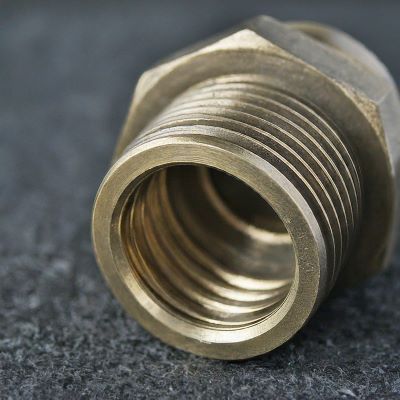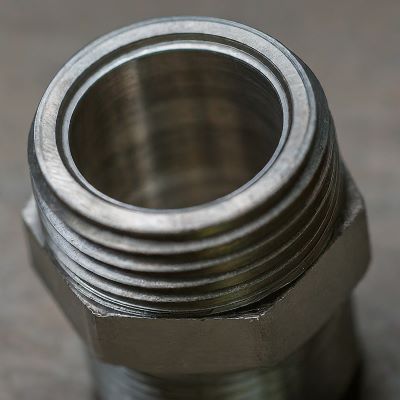In the high-pressure realm of hydraulics, where fluids reign supreme, two titans clash: JIC and SAE fittings. Both boast impressive lineages and dedicated followings, but which one reigns supreme? Buckle up, hydraulic enthusiasts, as we delve into the JIC vs SAE showdown and determine the champion of the fluid world!
What Does JIC Stand For?
JIC, or Joint Industry Council, fittings have been the industry standard for decades. They are well-known for being durable and leak resistant. They are often the top choice for tough jobs in construction, agriculture, and mining.
Advantages of JIC Fittings
Robust construction: JIC fittings are typically made from forged steel, ensuring they can withstand high pressures and harsh environments.
45-degree flare: The JIC’s signature 45-degree flare creates a tight seal, minimizing the risk of leaks.
Wide availability: JIC fittings are readily available from various manufacturers, making them easy to source.
Applications of JIC Fittings
Construction equipment: JIC fittings are commonly used in hydraulic systems for excavators, bulldozers, and cranes.
Agricultural machinery: Tractors, harvesters, and other agricultural equipment often rely on JIC fittings for their hydraulic systems.
Industrial machinery: JIC fittings are essential components in hydraulic systems for presses, shears, and other industrial equipment.
What is a SAE Hydraulic Fitting?
SAE, or Society of Automotive Engineers, fittings are gaining ground in the hydraulic arena. They are known for being versatile and easy to use. They’re more and more popular in mobile and industrial applications.
Advantages of SAE Fittings
Variety of materials: SAE fittings come in various materials, including steel, brass, and nylon, making them suitable for diverse applications.
O-ring seals: SAE fittings utilize O-ring seals for a quick and reliable connection, simplifying installation and maintenance.
Lighter weight: Compared to JIC fittings, SAE fittings are generally lighter, making them ideal for weight-sensitive applications.
Applications of SAE Fittings
Mobile hydraulics: SAE fittings are widely used in hydraulic systems for trucks, buses, and other mobile equipment.
Industrial automation: SAE fittings are common components in hydraulic systems for robots, machine tools, and other industrial automation equipment.
Medical equipment: Due to their clean and reliable operation, SAE fittings are sometimes used in medical equipment hydraulics.
Hydraulic Showdown: JIC vs SAE – The Comparative Analysis
Now, let’s pit JIC and SAE against each other in a head-to-head battle across key metrics:
Material Matters: JIC takes the crown for sheer durability with its forged steel construction. However, SAE offers a wider range of materials for specific needs.
Installation Ease: SAE’s O-ring seals make installation a breeze compared to JIC’s 45-degree flare. For quick assembly and disassembly, SAE shines.
Performance Metrics: Both JIC and SAE deliver excellent performance in terms of pressure handling and leak resistance. The choice may depend on the specific application’s requirements.
Cost Considerations: JIC fittings are generally more affordable than their SAE counterparts. However, installing SAE is easy. And, it has lower maintenance costs. These benefits can offset the higher initial price.
The Verdict
Declaring a single champion in the JIC vs SAE showdown is impossible. Both excel in different areas, and the ideal choice depends on your specific needs and priorities.
➡️ For heavy-duty applications requiring maximum durability and leak resistance, JIC reigns supreme.
➡️ For mobile and industrial applications where ease of use and versatility are key, SAE takes the lead.
Ultimately, the best fitting is the one that best suits your project’s demands. Consider factors. These include pressure needs, the operating environment, budget, and desired maintenance level. Consider them before making your choice.
Remember, hydraulics are a serious business. Always consult with a qualified professional to ensure you’re using the right fittings for the job. With the right knowledge and some informed choices, you can navigate the hydraulic world with confidence. You’ll know you’ve chosen the fitting that rules your fluid domain.
FAQs: Navigating the Fluid Landscape
Are JIC and SAE fittings interchangeable?
➡️ Discover the factors that make JIC and SAE fittings work together. They ensure integration in hydraulic systems.
How do I choose between JIC and SAE for high-pressure applications?
➡️ Learn about the factors that guide your choice. You must decide between JIC and SAE fittings for high-pressure hydraulics.
Can I mix JIC and SAE fittings in the same hydraulic system?
➡️ Explain the compatibility concerns. Also, discuss the challenges of mixing JIC and SAE fittings in one hydraulic setup.
What industries benefit the most from JIC fittings?
➡️ Explore the industries where JIC fittings offer unmatched advantages. They optimize fluid flow for peak performance.
Are SAE fittings suitable for hydraulic systems with extreme temperatures?
➡️ Dive into the temperature tolerance of SAE fittings. Make sure they meet the needs of hydraulic systems in extreme conditions.
How do material choices impact the longevity of JIC and SAE fittings?
➡️ Understand the link between material choice and the lifespan of JIC and SAE fittings. This understanding helps in making informed decisions.
Conclusion
This Hydraulic showdown is about choosing between JIC and SAE fittings. The choice is nuanced and demands a deep understanding of your hydraulic system’s needs. You have insights into advantages, applications, and a comparison. With them, you can confidently navigate the changing world. They ensure the best performance and long life.
Remember, hydraulics are a serious business. Always consult with a qualified professional to ensure you’re using the right fittings for the job. With the right knowledge and some informed decisions, you can navigate the hydraulic world with confidence. You’ll know you’ve chosen the fitting that truly rules your fluid domain.
Post time: Feb-28-2024



